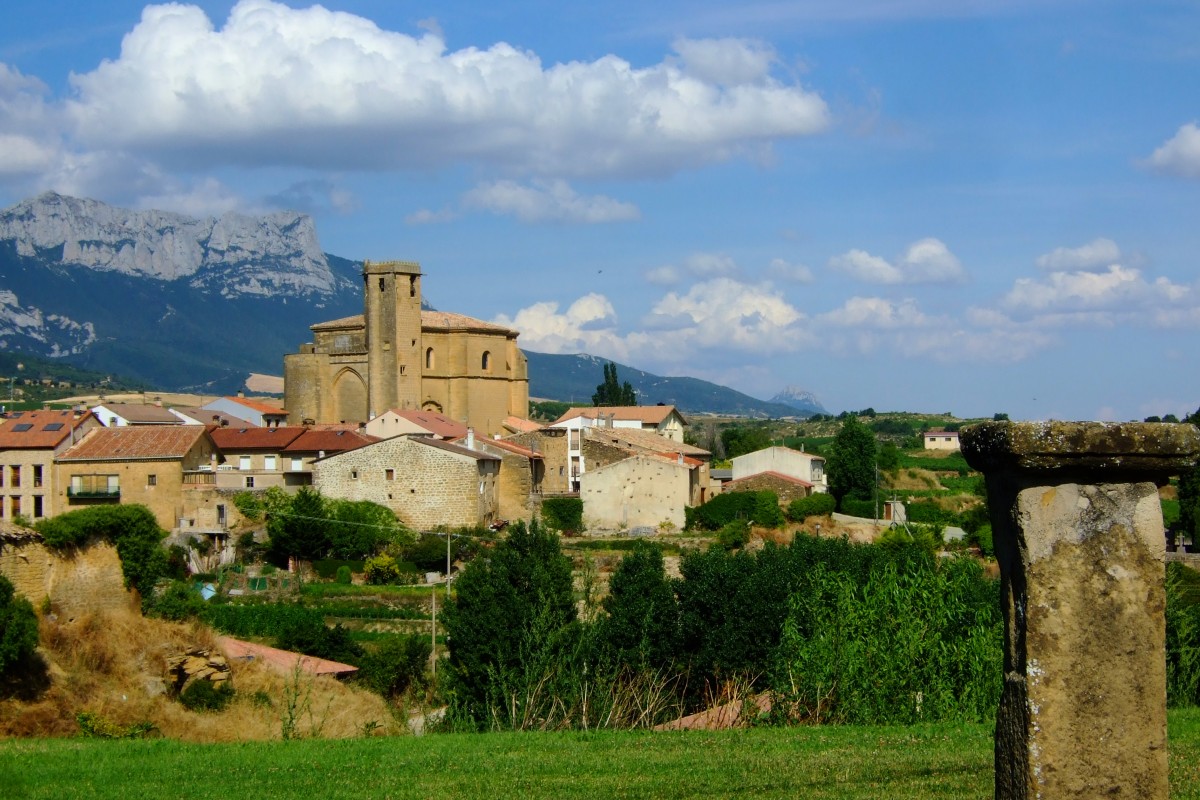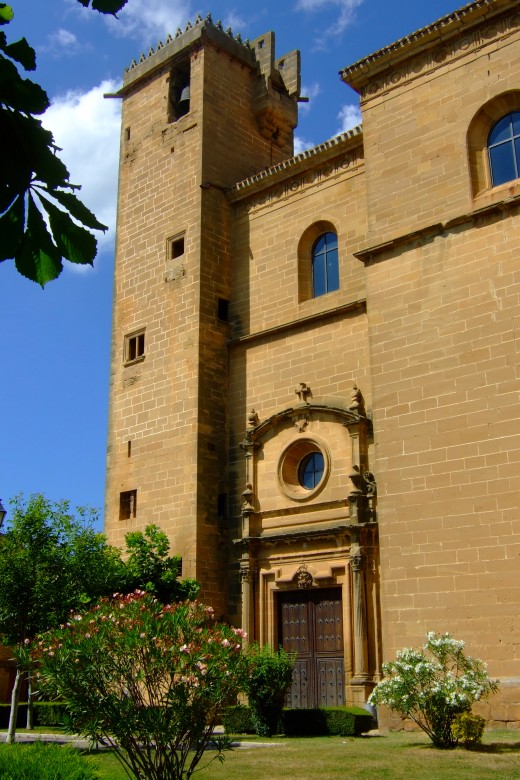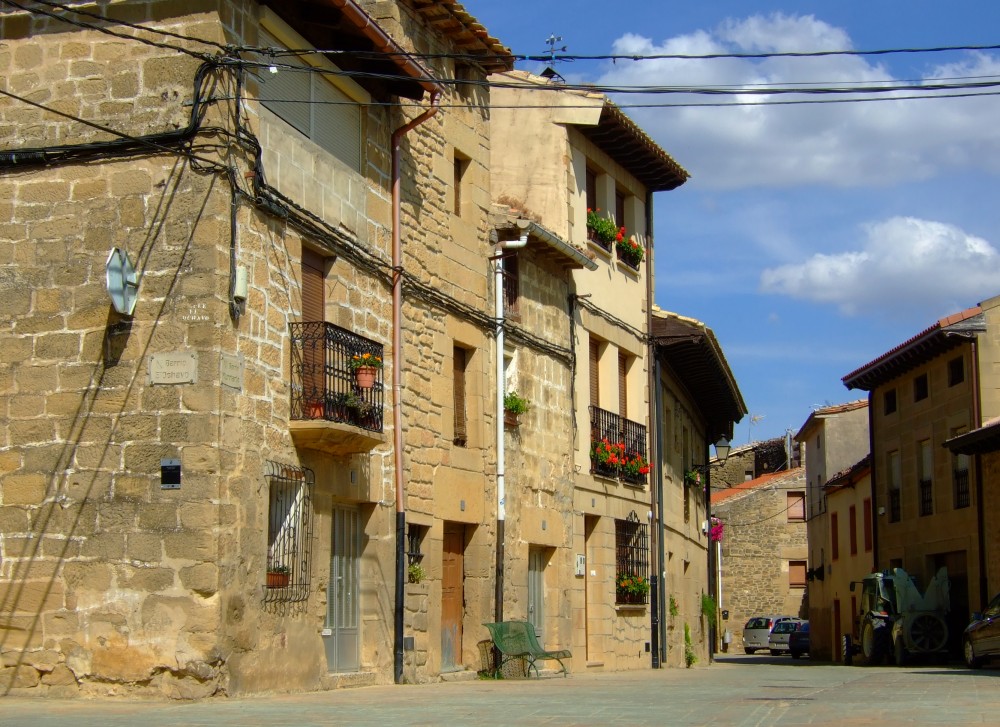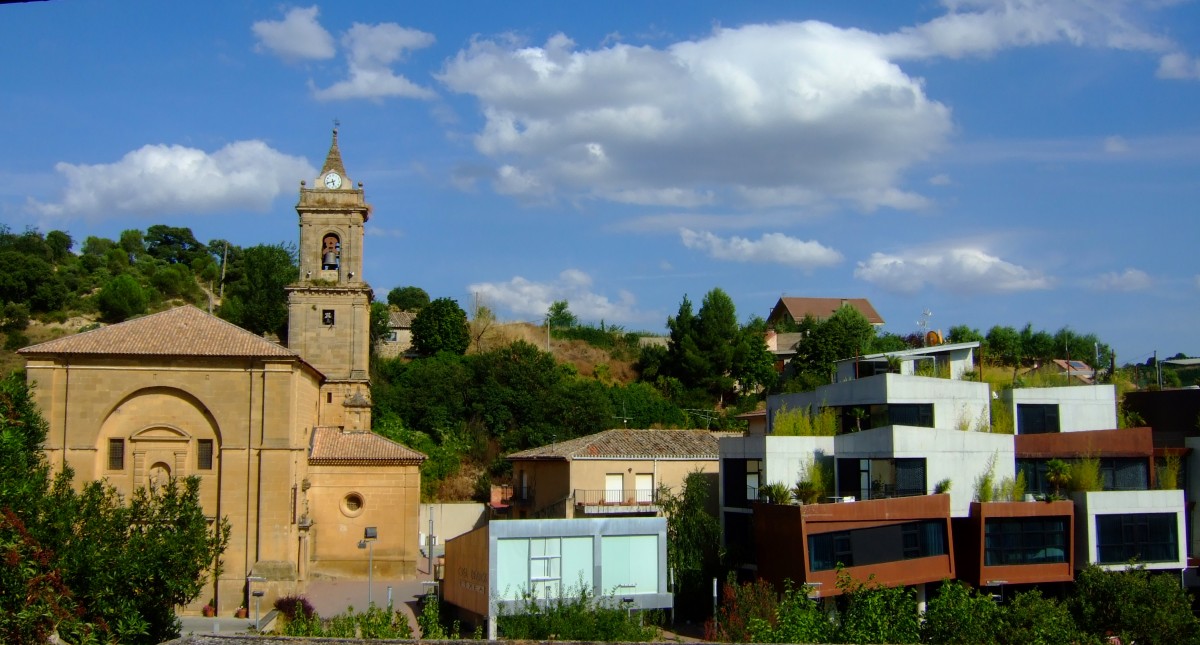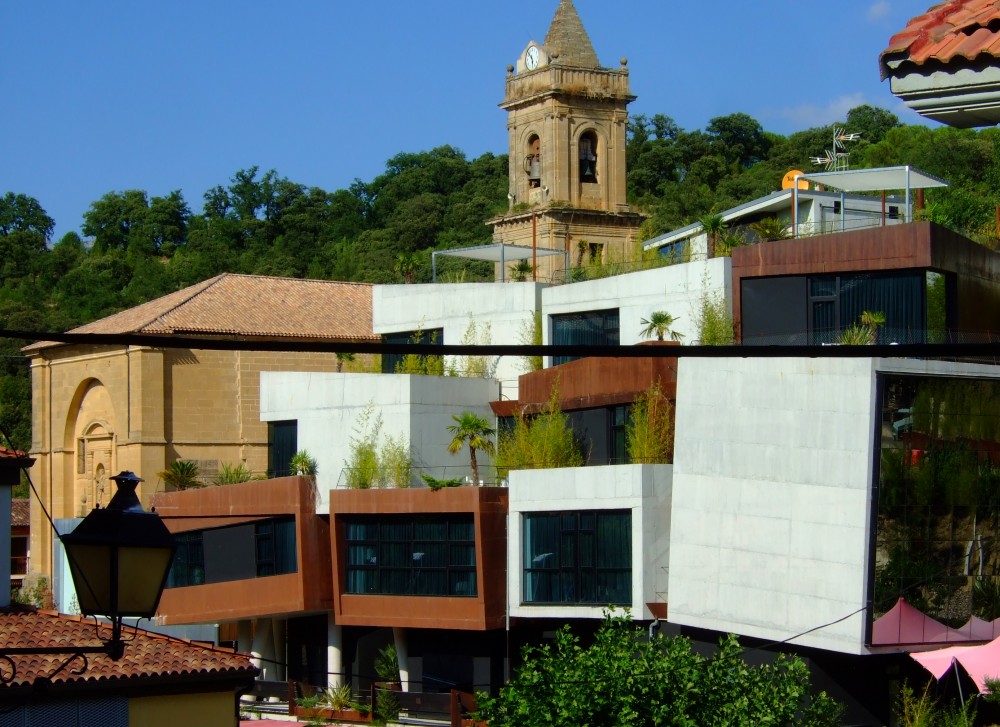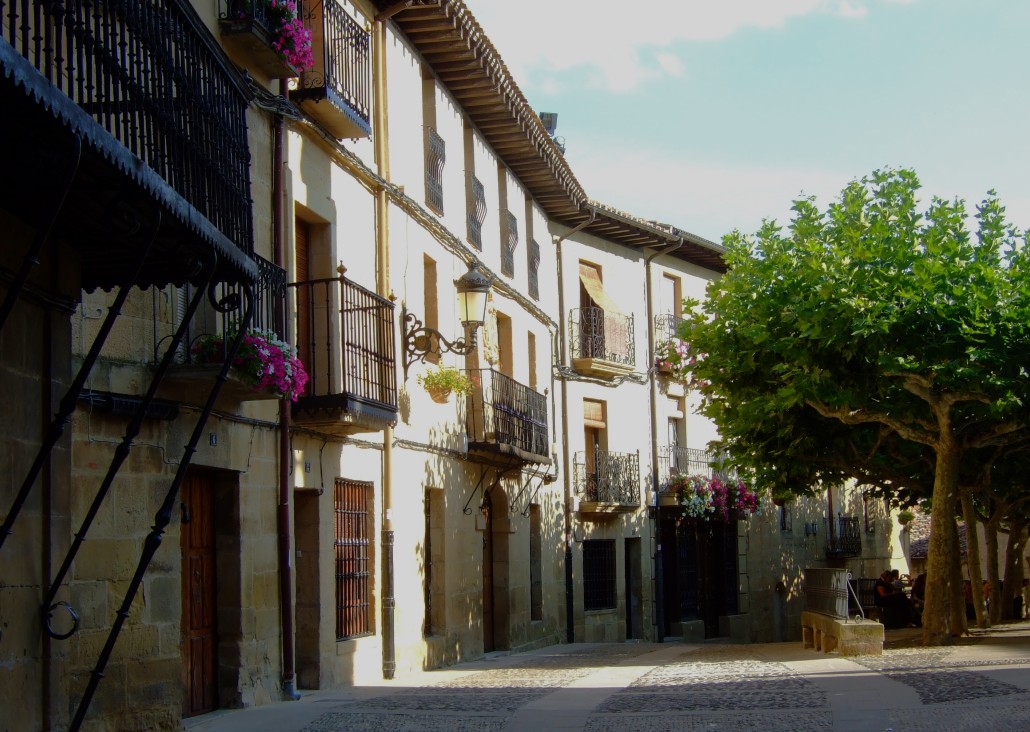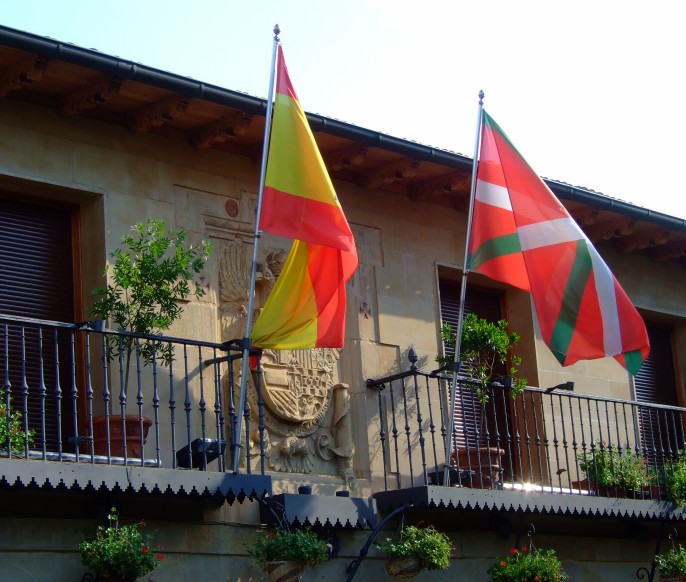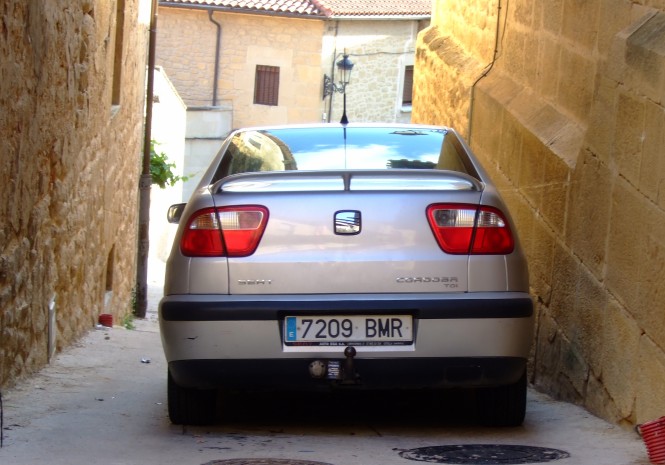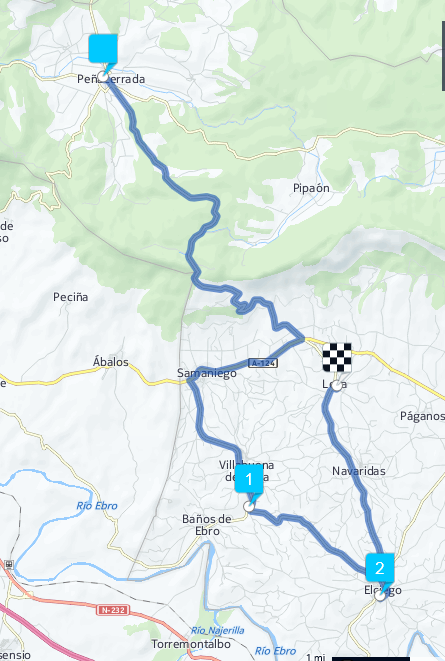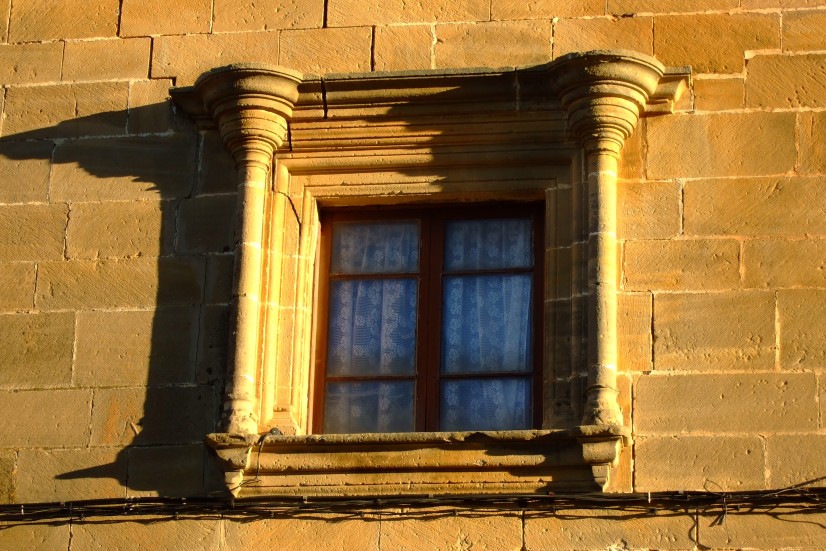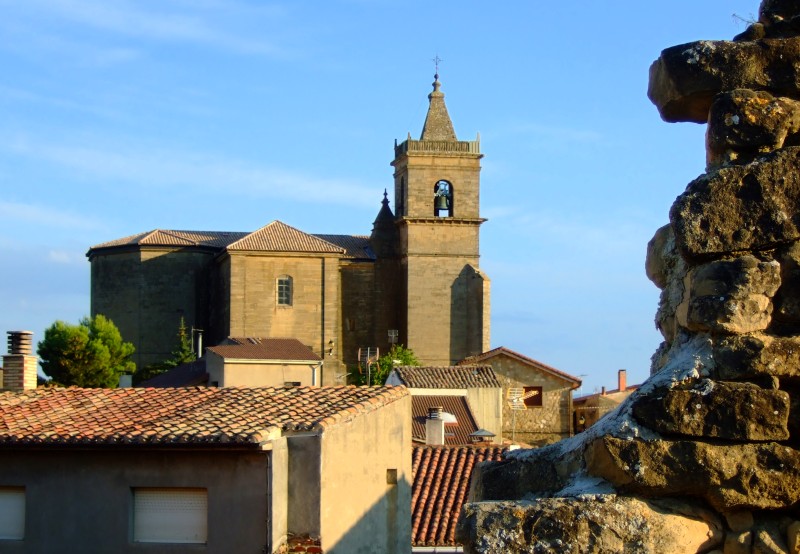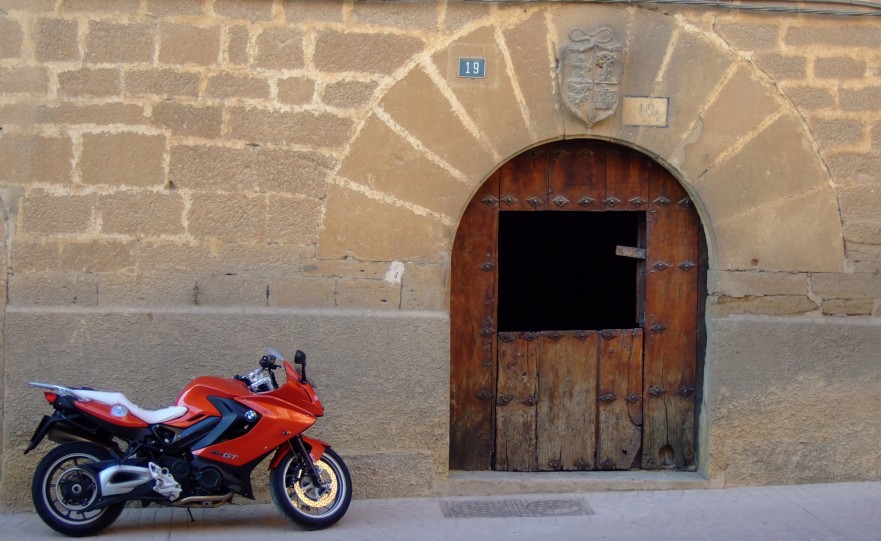It’s the heart of the summer, and from the height south-bordering the Álava plain there lies at my feet, majestic and fertile, hot and glaring, the Ebro valley; namely the Basque side of Rioja, which is somehow a territorial inconsistence, since all southern Álava is, like Treviño, actually more Castilian than Basque; but we’re deep into an autonomic nonsense here in Spain, after Franco died.
The road from Vitoria to the height descends now towards the valley in a series of fun bends which are a good challenge for a bike rider. Pity it gets so hot as I go down into the Iberic cauldron, the valley bed where the vinyards are, that I need to take my jacket off.
My first stop for today’s route is Samaniego, of yore an important village as a western fortified outpost of Laguardia (the region’s stronghold by then), bordering the Navarre Sonsierra. Of those walls and castles, though, remains only a turret, by which later on the church was built.
Castilians brought peace to this region at the end of the Middle Ages, and Samaniego is today a sunny village of quiet streets, thrown into vineyard farming and into wine brewing, good Riojas.
Barely one league further south I come across Villabuena, a nice place on the cool and shady banks of the Herrera river. It calls my attention, though, a pretentious cubist quarter right by the old church, breaking the architectural harmony of traditional masonry and clay tiles; to me, a monstrosity conceived by some modern architect sponsored with public money in the hands of dishonest politicians. Pity, becuse Villabuena would be so much nicer without it.
It’s also worth mentioning the ‘basquified’ version of Villabuena’s name: in their orwellian crusade for re-inventing the past and disguising the present, erasing every vestige of History, its distinguished town-councilmen decided, for the general delusion, to take the village’s previous name, Villaescuerna, and turn it into a Basque-looking version: Eskuernaga. Whatever.
This remark done, I leave Villabuena’s steep and winding streets for the next link of my route’s chain; a small town that doesn’t need neither introduction nor advertisement: the renowned Elciego, now renamed to Zieko or Eltziego by the resentful independentist censorship. The ethimology of the name goes back to the very legend, and there is no agreement about it among the lingüists: some say it comes from Basque, some from Latin, and they can’t agree. There exists a document dated XIth c., a testament written in latin, which reads more or less thus: In the name of Christ Our Redeemer, I, señor Aznar Diaz de Cieco, moved by the love of God and pushed by the regret of my sins, hereby freely dispose to donate, by the glory of God, some of what He so abundantly has bestowed me with. Therefore I grant and assign to you Abbes Blasco and the other nuns in your monastery my own palace that I posess in El Cieco, with all its estate and property, vineyards and mills…
Besides, according to the knowledgable, toponyms in this region have very little Basque influence because it was originally populated by celts, who got deeply romanized; and the Basques that settled afterwards, during during the middle ages, soon adopted Castilian as their language.
Today well known for certain renowned winery plus a dozen others less famous, Elciego is at least one millennium old; and though for some centuries it was a hamlet belonging to the nearby Laguardia, in 1583 they bought from the Crown the right to be called villa, in order to become independent from their neighbours. (Apparently, longs for independence are consubstantial with the Spanish character, and there’s nothing more Spanish than disowning Spain.) However, despite all their pains, by mid XIXth Elciego still was under jurisdiction of Laguardia, military government of the Basque Provinces, Court of Burgos and diocese of Calahorra. A lot to get independent of, yet.
On the other hand, their inhabitants don’t seem to be any better than other Spaniards, autonomic or not, when it comes to basic rules of coexistence: they park their cars like this (see photo), disrespecting their neighbour’s right to use the street. I wonder if local policemen have eyes, or do they look somewhere else when passing by this spot?
Here are a few notes from the Madoz etnographic dictionary, whose reading is always a refreshing and nostalgic experience, a meeting with costumbrist life as it was 150 years ago (some of whose echoes I was able to know in my infancy): Elciego has 238 homes and a school with 100 pupils of bot sexes provided with 3,300 reales. Its parish church, Saint Andrew Apostle, was served by four incumbents on full board, two on half board and four on a fourth, all of them permanent, and by two sacristans, two altar boys and one organist.
While Madoz was compiling data for his work, in that same century Elciego and around saw an economical and long-termed consolidation: being the largest wine producers in the area, they strived for industrialization, to which end a society was created that would favour and implement the necessary technical improvements, and this gave birth to the Rioja brand, and thus Rioja wine was born. Camilo Hurtado de Amézaga, Marqués de Riscal, pioneered making profitable such society’s projects, and settled the foundations for a real industrial vine & wine production in the Bordeaux style.
On the way back to Vitoria –the summer twilight sun stretches out the shadows and puts auburn tinges onto the landscape– we still visit two villages, Navaridas and Leza, whose quietness and humbleness bring me dear memories from a rural childhood of patios and flowerpots, dodgy cats and old women in mourning, and other snapshots that I always carry close to my heart.
Navaridas and Leza have fruitful lands; border lands long ago contended by Romans and Celts, then by Christians and Muslims, lastly by Castilians and Basques. Today, their quiet streets barely see any activity other than a handful of few neighbours who still remain here, labouring their golden vineyards.


